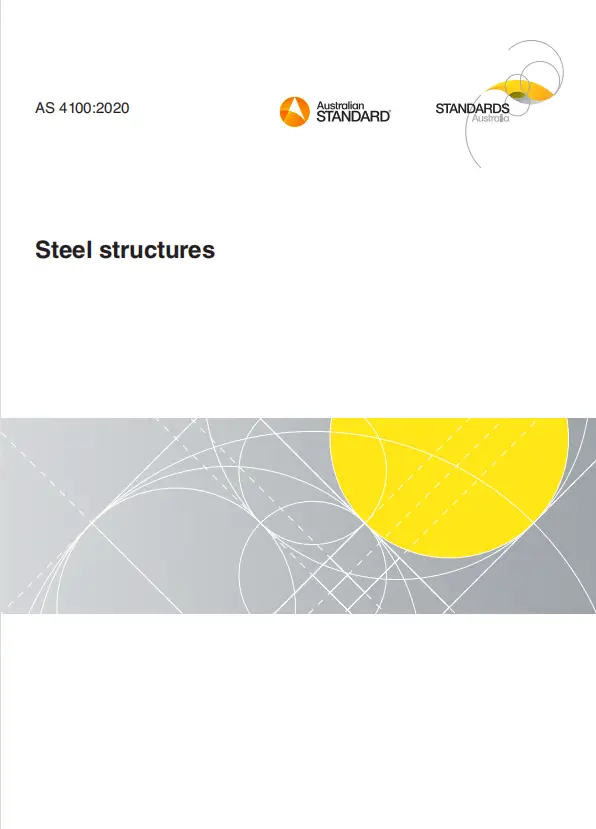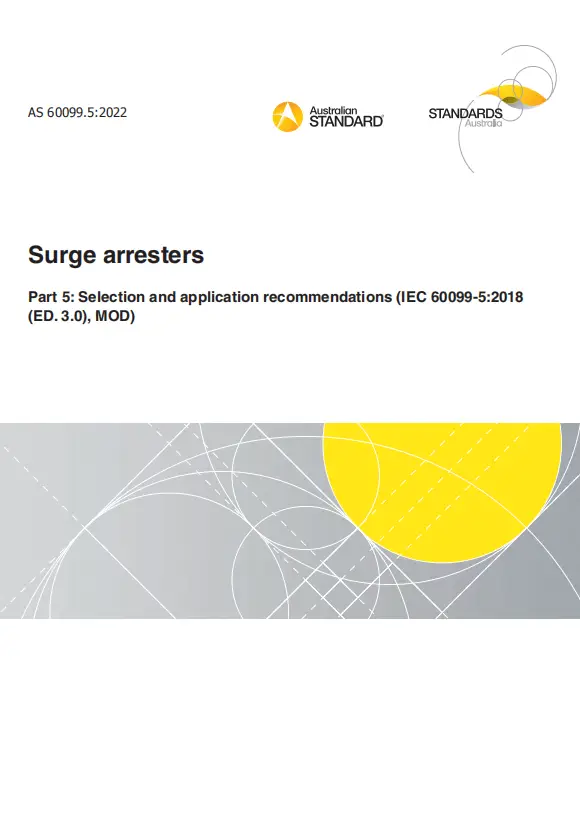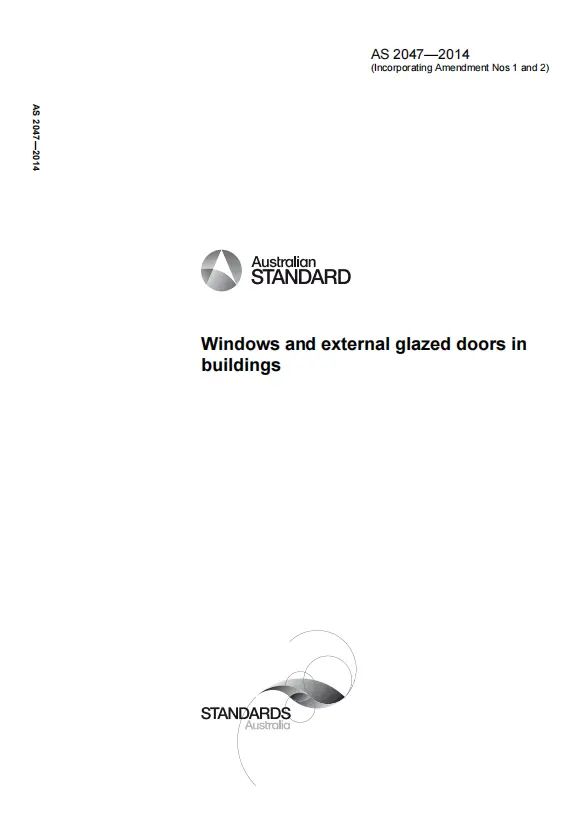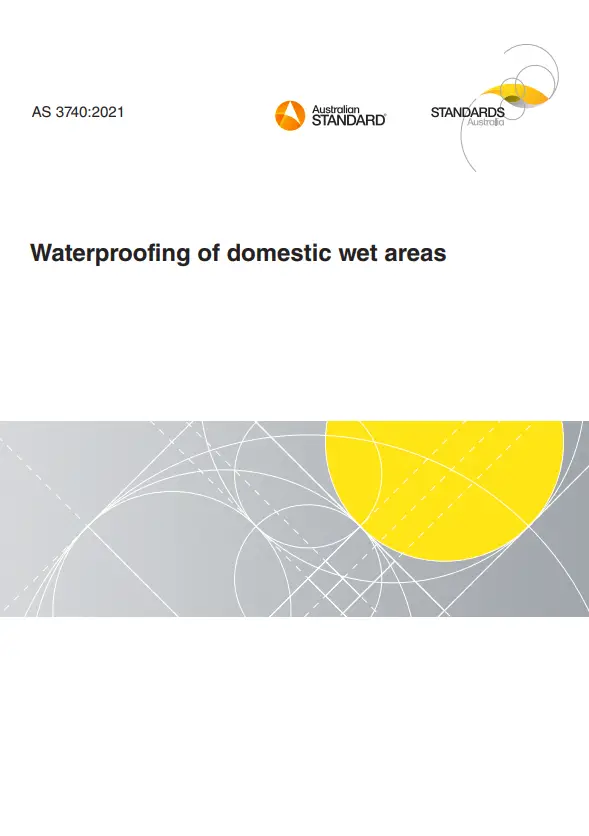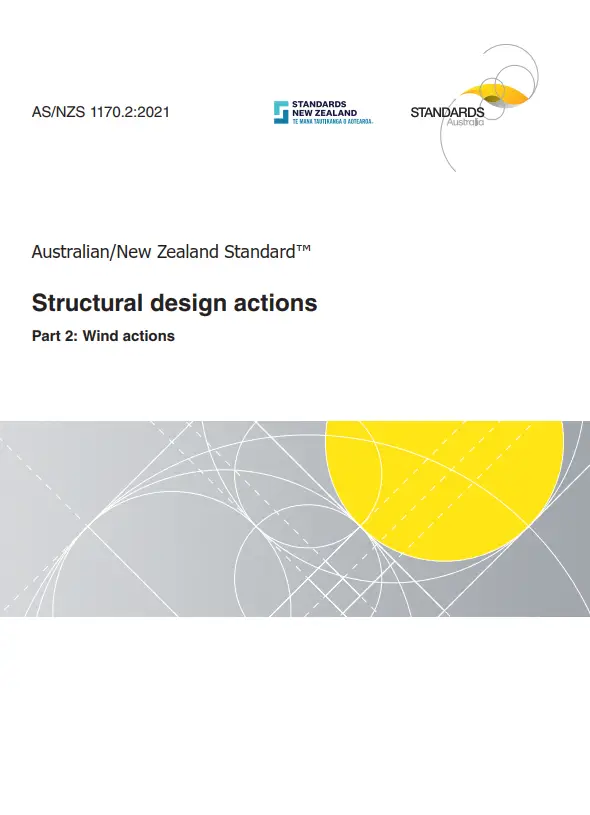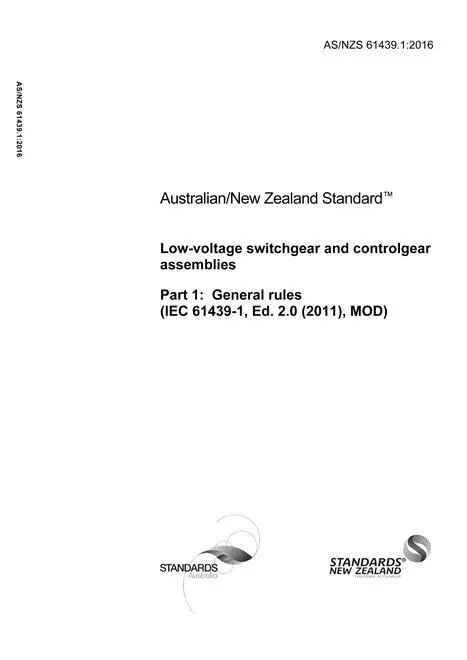AS 4100, 3rd, 2020 – Steel structures
This Standard sets out minimum requirements for the design and the engineering aspects of fabrication and erection, and modification of steelwork in structures in accordance with the limit states design method.
This Standard applies to buildings, structures and cranes constructed of steel.
NOTE: For design of box and longitudinally stiffened girders, refer to AS/NZS 5100.6.
General Product Information:
| Committee |
BD-001 |
| Purchase Note |
All current amendments available at time of purchase are included with the purchase of this document |
| Document Type |
PDF |
| ISBN |
978 1 76072 947 9 |
| Pages |
230 |
| Document Language |
English |
| Publisher |
Standards Australia |
| Status |
Current |
Preview
Table of cotents
Preface
1 Scope and general
1.1 Scope and exclusions
1.1.1 Scope
1.1.2 Exclusions
1.2 Normative references
1.3 Terms and definitions
1.4 Notation
1.5 Use of alternative materials or methods
1.5.1 General
1.5.2 Existing structures
1.6 Design
1.6.1 Design data
1.6.2 Design details
1.7 Workmanship
1.7.1 General
1.7.2 Construction category
1.7.3 Architecturally exposed structural steelwork
1.7.4 Fabrication and erection
2 Materials
2.1 Yield stress and tensile strength used in design
2.1.1 Yield stress
2.1.2 Tensile strength
2.2 Structural steel
2.2.1 Australian Standards
2.2.2 Acceptance of steels
2.2.3 Unidentified steel
2.2.4 Properties of steel
2.2.5 Through-thickness deformation properties
2.3 Fasteners
2.3.1 Steel bolts, nuts and washers
2.3.2 Equivalent high strength fasteners
2.3.3 Welds
2.3.4 Welded studs
2.3.5 Explosive fasteners
2.3.6 Anchor bolts
2.3.7 Mechanical and chemical anchors
2.4 Steel castings
3 General design requirements
3.1 Design
3.1.1 Aim
3.1.2 Requirements
3.2 Loads and other actions
3.2.1 Loads
3.2.2 Other actions
3.2.3 Design load combinations
3.2.4 Notional horizontal forces
3.2.5 Structural robustness
3.3 Stability limit state
3.4 Strength limit state
3.5 Serviceability limit state
3.5.1 General
3.5.2 Method
3.5.3 Deflection limits
3.5.4 Vibration of beams
3.5.5 Bolt serviceability limit state
3.5.6 Corrosion protection
3.6 Strength and serviceability limit states by load testing
3.7 Brittle fracture
3.8 Lamellar tearing
3.9 Fatigue
3.10 Fire
3.11 Earthquake
3.12 Other design requirements
3.13 Reliability management
4 Methods of structural analysis
4.1 Methods of determining action effects
4.1.1 General
4.1.2 Definitions
4.2 Forms of construction assumed for structural analysis
4.2.1 General
4.2.2 Rigid construction
4.2.3 Semi-rigid construction
4.2.4 Simple construction
4.2.5 Design of connections
4.3 Assumptions for analysis
4.3.1 General
4.3.2 Span length
4.3.3 Arrangements of live loads for buildings
4.3.4 Simple construction
4.4 Elastic analysis
4.4.1 General
4.4.1.1 Assumptions
4.4.1.2 Second-order effects
4.4.2 First-order elastic analysis
4.4.2.1 General
4.4.2.2 Moment amplification for a braced member
4.4.2.3 Moment amplification for a sway member
4.5 Plastic analysis
4.5.1 Application
4.5.2 Limitations
4.5.3 Assumptions of analysis
4.5.4 Second order effects
4.6 Member buckling analysis
4.6.1 General
4.6.2 Member elastic buckling load
4.6.3 Member effective length factor
4.6.3.1 General
4.6.3.2 Members with idealized end restraints
4.6.3.3 Members in frames
4.6.3.4 Stiffness ratios in rectangular frames
4.6.3.5 Members in triangulated structures
4.7 Frame buckling analysis
4.7.1 General
4.7.2 In-plane frame buckling
4.7.2.1 Rectangular frames with all members braced
4.7.2.2 Rectangular frames with sway members
5 Members subject to bending
5.1 Design for bending moment
5.2 Section moment capacity for bending about a principal axis
5.2.1 General
5.2.2 Section slenderness
5.2.3 Compact sections
5.2.4 Non-compact sections
5.2.5 Slender sections
5.2.6 Elastic and plastic section moduli
5.3 Member capacity of segments with full lateral restraint
5.3.1 Member capacity
5.3.2 Segments with full lateral restraint
5.3.2.1 General
5.3.2.2 Segments with continuous lateral restraints
5.3.2.3 Segments with intermediate lateral restraints
5.3.2.4 Segments with full or partial restraints at both ends
5.3.3 Critical section
5.4 Restraints
5.4.1 General
5.4.2 Restraints at a cross-section
5.4.2.1 Fully restrained
5.4.2.2 Partially restrained
5.4.2.3 Rotationally restrained
5.4.2.4 Laterally restrained
5.4.3 Restraining elements
5.4.3.1 Restraint against lateral deflection
5.4.3.2 Restraint against twist rotation
5.4.3.3 Parallel restrained members
5.4.3.4 Restraint against lateral rotation
5.5 Critical flange
5.5.1 General
5.5.2 Segments with both ends restrained
5.5.3 Segments with one end unrestrained
5.6 Member capacity of segments without full lateral restraint
5.6.1 Segments fully or partially restrained at both ends
5.6.1.1 Open sections with equal flanges
5.6.1.2 I-sections with unequal flanges
5.6.1.3 Angle sections
5.6.1.4 Hollow sections
5.6.2 Segments unrestrained at one end
5.6.3 Effective length
5.6.4 Design by buckling analysis
5.7 Bending in a non-principal plane
5.7.1 Deflections constrained to a non-principal plane
5.7.2 Deflections unconstrained
5.8 Separators and diaphragms
5.9 Design of webs
5.9.1 General
5.9.2 Definition of web panel
5.9.3 Minimum thickness of web panel
5.10 Arrangement of webs
5.10.1 Unstiffened webs
5.10.2 Load bearing stiffeners
5.10.3 Side reinforcing plates
5.10.4 Transversely stiffened webs
5.10.5 Webs with longitudinal and transverse stiffeners
5.10.6 Webs of members designed plastically
5.10.7 Openings in webs
5.11 Shear capacity of webs
5.11.1 Shear capacity
5.11.2 Approximately uniform shear stress distribution
5.11.3 Non-uniform shear stress distribution
5.11.4 Shear yield capacity
5.11.5 Shear buckling capacity
5.11.5.1 Unstiffened web
5.11.5.2 Stiffened web
5.12 Interaction of shear and bending
5.12.1 General
5.12.2 Proportioning method
5.12.3 Shear and bending interaction method
5.13 Compressive bearing action on the edge of a web
5.13.1 Dispersion of force to web
5.13.2 Bearing capacity
5.13.3 Bearing yield capacity
5.13.4 Bearing buckling capacity
5.13.5 Combined bending and bearing of rectangular and square hollow sections
5.14 Design of load bearing stiffeners
5.14.1 Yield capacity
5.14.2 Buckling capacity
5.14.3 Outstand of stiffeners
5.14.4 Fitting of load bearing stiffeners
5.14.5 Design for torsional end restraint
5.15 Design of intermediate transverse web stiffeners
5.15.1 General
5.15.2 Spacing
5.15.2.1 Interior panels
5.15.2.2 End panels
5.15.3 Minimum area
5.15.4 Buckling capacity
5.15.5 Minimum stiffness
5.15.6 Outstand of stiffeners
5.15.7 External forces
5.15.7.1 Increase in stiffness
5.15.7.2 Increase in strength
5.15.8 Connection of intermediate stiffeners to web
5.15.9 End posts
5.16 Design of longitudinal web stiffeners
5.16.1 General
5.16.2 Minimum stiffness
6 Members subject to axial compression
6.1 Design for axial compression
6.2 Nominal section capacity
6.2.1 General
6.2.2 Form factor
6.2.3 Plate element slenderness
6.2.4 Effective width
6.3 Nominal member capacity
6.3.1 Definitions
6.3.2 Effective length
6.3.3 Nominal capacity of a member of constant cross-section subject to flexural buckling
6.3.4 Nominal capacity of a member of varying cross-section
6.4 Laced and battened compression members
6.4.1 Design forces
6.4.2 Laced compression members
6.4.2.1 Slenderness ratio of a main component
6.4.2.2 Slenderness ratio of a laced compression member
6.4.2.3 Lacing angle
6.4.2.4 Effective length of a lacing element
6.4.2.5 Slenderness ratio limit of a lacing element
6.4.2.6 Mutually opposed lacing
6.4.2.7 Tie plates
6.4.3 Battened compression member
6.4.3.1 Slenderness ratio of a main component
6.4.3.2 Slenderness ratios of battened compression member
6.4.3.3 Effective length of a batten
6.4.3.4 Maximum slenderness ratio of a batten
6.4.3.5 Width of a batten
6.4.3.6 Thickness of a batten
6.4.3.7 Loads on battens
6.5 Compression members back to back
6.5.1 Components separated
6.5.1.1 Application
6.5.1.2 Configuration
6.5.1.3 Slenderness
6.5.1.4 Connection
6.5.1.5 Design forces
6.5.2 Components in contact
6.5.2.1 Application
6.5.2.2 Configuration
6.5.2.3 Slenderness
6.5.2.4 Connection
6.5.2.5 Design forces
6.6 Restraints
6.6.1 Restraint systems
6.6.2 Restraining members and connections
6.6.3 Parallel braced compression members
7 Members subject to axial tension
7.1 Design for axial tension
7.2 Nominal section capacity
7.3 Distribution of forces
7.3.1 End connections providing uniform force distribution
7.3.2 End connections providing non-uniform force distribution
7.4 Tension members with two or more main components
7.4.1 General
7.4.2 Design forces for connections
7.4.3 Tension member composed of two components back-to-back
7.4.4 Laced tension member
7.4.5 Battened tension member
7.5 Members with pin connections
8 Members subject to combined actions
8.1 General
8.2 Design actions
8.3 Section capacity
8.3.1 General
8.3.2 Uniaxial bending about the major principal x-axis
8.3.3 Uniaxial bending about the minor principal y-axis
8.3.4 Biaxial bending
8.4 Member capacity
8.4.1 General
8.4.2 In-plane capacity — Elastic analysis
8.4.2.1 Application
8.4.2.2 Compression members
8.4.2.3 Tension members
8.4.3 In-plane capacity — Plastic analysis
8.4.3.1 Application
8.4.3.2 Member slenderness
8.4.3.3 Web slenderness
8.4.3.4 Plastic moment capacity
8.4.4 Out-of-plane capacity
8.4.4.1 Compression members
8.4.4.2 Tension members
8.4.5 Biaxial bending capacity
8.4.5.1 Compression members
8.4.5.2 Tension members
8.4.6 Eccentrically loaded double bolted or welded single angles in trusses
9 Connections
9.1 General
9.1.1 Requirements for connections
9.1.2 Classification of connections
9.1.2.1 Connections in rigid construction
9.1.2.2 Connections in semi-rigid construction
9.1.2.3 Connections in simple construction
9.1.2.4 Connections in structures analysed by the plastic method
9.1.3 Design of connections
9.1.4 Minimum design actions on connections
9.1.5 Intersections
9.1.6 Choice of fasteners
9.1.7 Combined connections
9.1.8 Prying forces
9.1.9 Connection components
9.1.10 Deductions for fastener holes
9.1.10.1 Hole area
9.1.10.2 Holes not staggered
9.1.10.3 Staggered holes
9.1.11 Hollow section connections
9.2 Design of bolts
9.2.1 Bolts and bolting category
9.2.2 Bolt strength limit states
9.2.2.1 Bolt in shear
9.2.2.2 Bolt in tension
9.2.2.3 Bolt subject to combined shear and tension
9.2.2.4 Ply in bearing
9.2.2.5 Filler plates
9.2.3 Bolt serviceability limit state
9.2.3.1 Design
9.2.3.2 Contact surfaces
9.2.3.3 Combined shear and tension
9.3 Assessment of the strength of a bolt group
9.3.1 Bolt group subject to in-plane loading
9.3.2 Bolt group subject to out-of-plane loading
9.3.3 Bolt group subject to combinations of in-plane and out-of-plane loadings
9.4 Design of a pin connection
9.4.1 Pin in shear
9.4.2 Pin in bearing
9.4.3 Pin in bending
9.4.4 Ply in bearing
9.5 Design details for bolts and pins
9.5.1 Minimum pitch
9.5.2 Minimum edge distance
9.5.3 Maximum pitch
9.5.4 Maximum edge distance
9.5.5 Holes
9.6 Design of welds
9.6.1 Scope
9.6.1.1 General
9.6.1.2 Weld types
9.6.1.3 Weld quality
9.6.2 Complete and incomplete penetration butt welds
9.6.2.1 Definitions
9.6.2.2 Size of weld
9.6.2.3 Design throat thickness
9.6.2.4 Effective length
9.6.2.5 Effective area
9.6.2.6 Transition of thickness or width
9.6.2.7 Strength assessment of a butt weld
9.6.3 Fillet welds
9.6.3.1 Size of a fillet weld
9.6.3.2 Minimum size of a fillet weld
9.6.3.3 Maximum size of a fillet weld along an edge
9.6.3.4 Design throat thickness
9.6.3.5 Effective length
9.6.3.6 Effective area
9.6.3.7 Transverse spacing of fillet welds
9.6.3.8 Intermittent fillet welds
9.6.3.9 Built-up members — Intermittent fillet welds
9.6.3.10 Strength limit state for fillet weld
9.6.4 Plug and slot welds
9.6.4.1 Plug and slot welds in the form of fillet welds around the circumference of the hole or slot
9.6.4.2 Plug and slot welds in hole filled with weld metal
9.6.4.3 Limitations
9.6.5 Compound weld
9.6.5.1 Description of a compound weld
9.6.5.2 Design throat thickness
9.6.5.3 Strength limit state
9.7 Assessment of the strength of a weld group
9.7.1 Weld group subject to in-plane loading
9.7.1.1 General method of analysis
9.7.1.2 Alternative analysis
9.7.2 Weld group subject to out-of-plane loading
9.7.2.1 General method of analysis
9.7.2.2 Alternative analysis
9.7.3 Weld group subject to in-plane and out-of-plane loading
9.7.3.1 General method of analysis
9.7.3.2 Alternative analysis
9.7.4 Combination of weld types
9.8 Packing in construction
10 Brittle fracture
10.1 Methods
10.2 Notch-ductile range method
10.3 Design service temperature
10.3.1 General
10.3.2 Basic design temperature
10.3.3 Modifications to the basic design temperature
10.4 Material selection
10.4.1 Selection of steel type
10.4.2 Limitations
10.4.3 Modification for certain applications
10.4.3.1 Steel subject to strain between 1.0 % and 10.0 %
10.4.3.2 Steel subject to a strain of not less than 10.0 %
10.4.3.3 Post-weld heat-treated members
10.4.3.4 Non-conforming conditions
10.4.4 Selection of steel grade
10.5 Fracture assessment
11 Fatigue
11.1 General
11.1.1 Requirements
11.1.2 Notation
11.1.3 Limitation
11.1.4 Designation of weld category
11.1.5 Method
11.1.6 Thickness effect
11.2 Fatigue loading
11.3 Design spectrum
11.3.1 Stress determination
11.3.2 Design spectrum calculation
11.4 Exemption from assessment
11.5 Detail category
11.5.1 Detail categories for normal stress
11.5.2 Detail categories for shear stress
11.6 Fatigue strength
11.6.1 Definition of fatigue strength for normal stress
11.6.2 Definition of fatigue strength for shear stress
11.7 Exemption from further assessment
11.8 Fatigue assessment
11.8.1 Constant stress range
11.8.2 Variable stress range
11.9 Punching limitation
12 Fire
12.1 Requirements
12.2 Definitions
12.3 Determination of period of structural adequacy
12.4 Variation of mechanical properties of steel with temperature
12.4.1 Variation of yield stress with temperature
12.4.2 Variation of modulus of elasticity and shear modulus with temperature
12.4.3 Slenderness at elevated temperature
12.5 Determination of limiting steel temperature
12.6 Determination of time at which limiting temperature is attained for protected members
12.6.1 Methods
12.6.2 Temperature based on test series
12.6.2.1 General
12.6.2.2 Regression analysis
12.6.2.3 Limitations and conditions on use of regression analysis
12.6.3 Temperature based on single test
12.7 Determination of time at which limiting temperature is attained for unprotected members
12.8 Determination of PSA from a single test
12.9 Three-sided fire exposure condition
12.10 Special considerations
12.10.1 Connections
12.10.2 Web penetrations
13 Earthquake
13.1 General
13.2 Definitions
13.3 Design and detailing requirements
13.3.1 General
13.3.2 Stiff elements
13.3.3 Non-structural elements
13.3.4 Structural ductility factor and structural performance factor
13.3.5 Requirements for “limited ductile” steel structures (μ = 2)
13.3.6 Requirements for “moderately ductile” steel structures (μ = 3)
13.3.6.1 General
13.3.6.2 Bearing wall and building frame systems
13.3.6.3 Moment-resisting frame, intermediate
13.3.6.4 Fabrication in areas of plastic deformation
13.3.7 Requirements for “fully ductile” structures (μ > 3)
14 Fabrication
14.1 General
14.2 Material
14.2.1 General
14.2.2 Identification
14.3 Fabrication procedures
14.3.1 General
14.3.2 Hole size
14.3.3 Bolting
14.3.3.1 General
14.3.3.2 Friction-type connection
14.3.3.3 Bearing-type connection
14.3.3.4 Bolt tensioning
14.4 Geometrical tolerances
14.4.1 General
14.4.2 Nonconformance of tolerances
15 Erection
15.1 General
15.1.1 Rejection of an erected item
15.1.2 Safety during erection
15.2 Erection procedures
15.2.1 General
15.2.2 Assembly of a connection involving bolts
15.2.2.1 General
15.2.2.2 Methods of tensioning
15.2.2.3 Part-turn method of tensioning
15.2.2.4 Tensioning by use of direct-tension indication device
15.3 Geometrical tolerances
15.3.1 General
15.3.2 Nonconformance of tolerances
16 Modification of existing structures
16.1 General
16.2 Materials
17 Testing of structures or elements
17.1 General
17.1.1 Scope of Section
17.1.2 Circumstances requiring tests
17.2 Definitions
17.3 Test requirements
17.4 Proof testing
17.4.1 Application
17.4.2 Test load
17.4.3 Criteria for acceptance
17.5 Prototype testing
17.5.1 Test specimen
17.5.2 Test load
17.5.3 Criteria for acceptance
17.5.4 Acceptance of production units
17.6 Report of tests
Appendix A
Appendix B
B.1 Suggested vertical deflection limits for beams
B.2 Suggested horizontal deflection limits
Appendix C
C.1 Scope
C.2 Selection of an appropriate corrosion protection system
C.3 Classification of environments
C.4 Protection systems
C.5 Application
Appendix D
D.1 General
D.2 Design
Appendix E
E.1 Analysis
E.2 Design bending moment
Appendix F
Appendix G
Appendix H
H.1 General
H.2 Segments restrained at both ends
H.3 Segments unrestrained at one end
H.4 Reference elastic buckling moment
H.5 Effects of end restraints
H.5.1 Torsional end restraints
H.5.2 End restraints against lateral rotation
H.5.2.1 Segments restrained at both ends
H.5.2.2 Segments unrestrained at one end
H.6 References
Appendix I
I.1 Yielding check
I.2 Buckling check
Appendix J
J.1 Test specimens
J.1.1 Form
J.1.2 Assembly and measurement
J.1.3 Number of specimens
J.2 Instrumentation
J.3 Method of testing
J.4 Slip load
J.5 Slip factor
Appendix K
K.1 Scope
K.2 Statistical data
K.3 Testing
K.3.1 General
K.3.2 Minimum number of tests
K.4 Mechanical properties
Appendix L
L.1 Introduction
L.2 Background
L.3 Input factors determining the choice of construction category
L.3.1 General
L.3.2 Importance factor
L.3.3 Service category
L.3.4 Fabrication category
L.4 Determination of the construction category
Appendix M
M.1 General
M.2 Procedure
M.3 Non destructive examination
Bibliography

